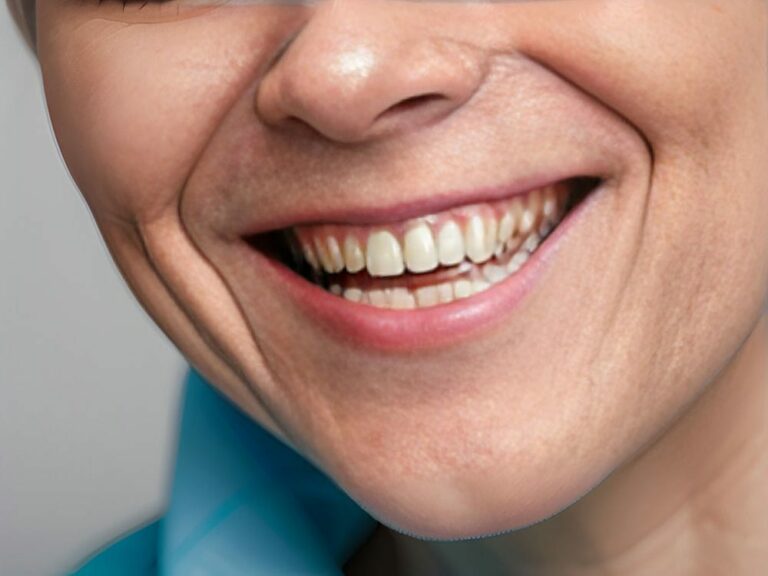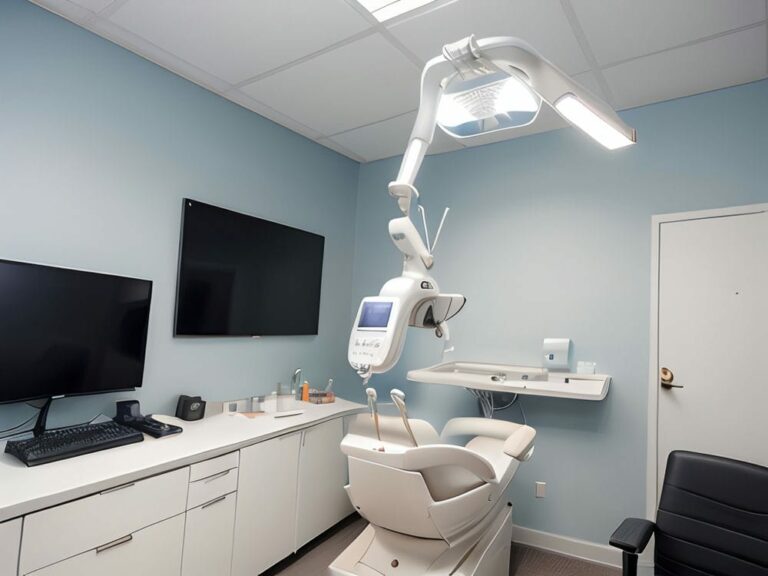Nanotechnology: A Revolutionary Approach in Dental Restorations
Nanotechnology: A Revolutionary Approach in Dental Restorations
Advancements in nanotechnology have revolutionized the field of dentistry, offering innovative solutions for tooth restoration and dental implants. Nanotechnology involves working with materials at the nanoscale level, where particles are measured in billionths of a meter. This allows for precise manipulation and control over the properties of materials, leading to improved durability, aesthetics, and biocompatibility in dental restorations.
One significant application of nanotechnology in dental restorations is the development of nanofillers for composite resins used in dental fillings. Traditional composite resins often exhibit limited strength and wear resistance, causing them to degrade over time. However, by incorporating nanofillers into these resins, researchers have been able to significantly enhance their mechanical properties. The small size of these nanofillers allows them to integrate seamlessly with the surrounding tooth structure, resulting in stronger and more durable fillings.
Furthermore, nanotechnology has also played a crucial role in improving the success rate of dental implants. Implants are artificial tooth roots that are surgically placed into the jawbone to support replacement teeth. The integration between the implant and surrounding bone is critical for long-term success. Nanofabrication techniques enable the modification of implant surfaces at a microscopic level, creating nanostructured surfaces that promote osseointegration – a process where bone cells attach and grow on the implant surface. This enhanced integration leads to better stability and longevity of dental implants.
In summary, nanotechnology offers exciting possibilities for advancing dental restorations by enhancing material properties and promoting better integration with natural tissues. The incorporation of nanofillers into composite resins improves their strength and durability while nanostructured implant surfaces facilitate superior osseointegration. As research and development continue in this field, we can expect further advancements that will revolutionize the way we approach tooth restoration and dental implants.
The Role of Nanomaterials in Advancing Dental Technology
Advancements in nanotechnology have revolutionized the field of dentistry by offering innovative solutions for tooth restoration and dental implants. Nanotechnology involves working with materials at the nanoscale level, where particles are measured in billionths of a meter. This precise manipulation and control over material properties lead to improved durability, aesthetics, and biocompatibility in dental restorations.
One significant application of nanotechnology in dental restorations is the use of nanofillers in composite resins for dental fillings. Traditional composite resins often have limited strength and wear resistance, resulting in degradation over time. However, by incorporating nanofillers into these resins, researchers have significantly enhanced their mechanical properties. The small size of these nanofillers allows them to seamlessly integrate with the surrounding tooth structure, resulting in stronger and more durable fillings.
Furthermore, nanotechnology has played a crucial role in improving the success rate of dental implants. Dental implants are artificial tooth roots that are surgically placed into the jawbone to support replacement teeth. The integration between the implant and surrounding bone is essential for long-term success. Nanofabrication techniques enable the modification of implant surfaces at a microscopic level, creating nanostructured surfaces that promote osseointegration – a process where bone cells attach and grow on the implant surface. This enhanced integration leads to better stability and longevity of dental implants.
Nanotechnology offers exciting possibilities for advancing dental technology by enhancing material properties and promoting better integration with natural tissues. The incorporation of nanofillers into composite resins improves their strength and durability while nanostructured implant surfaces facilitate superior osseointegration. As research and development continue in this field, we can expect further advancements that will revolutionize regenerative dentistry approaches for tooth restoration and dental implants.
Enhancing Oral Health through Nanoparticles in Dentistry
Nanomedicine, a branch of nanotechnology, has emerged as a promising field in oral care. Nanoparticles and nanorobots are being developed to improve oral health by combating bacteria, delivering targeted treatments, and enhancing the effectiveness of oral care products.
One exciting application of nanotechnology in dentistry is the use of nanoparticles for targeted drug delivery. These nanoparticles can be designed to specifically target and eliminate harmful bacteria in the mouth, reducing the risk of tooth decay and gum disease. By encapsulating antimicrobial agents within these nanoparticles, they can be released gradually over time, ensuring extended protection against bacteria.
Furthermore, nanorobots are being explored for their potential in performing precise dental procedures. These tiny robots could navigate through the mouth to clean plaque buildup, repair damaged teeth or gums, and even assist in orthodontic treatments. With their ability to operate at such a small scale, nanorobots offer the potential for minimally invasive procedures that are more comfortable and efficient for patients.
In addition to targeted drug delivery and nanorobotics, nanotechnology also plays a role in improving the effectiveness of oral care products. Nano-sized particles can be incorporated into toothpaste or mouthwash formulations to enhance their cleaning capabilities. These particles can penetrate hard-to-reach areas between teeth and along the gum line, removing plaque and stains more effectively than traditional oral care products.
The field of nanomedicine holds great promise for revolutionizing oral care by offering innovative solutions for maintaining optimal dental health. From targeted drug delivery with nanoparticles to the potential use of nanorobots for precise dental procedures, nanotechnology offers exciting possibilities for enhancing oral health outcomes. As research continues in this field, we can expect further advancements that will contribute to improved preventative measures and treatment options in dentistry.
Understanding the Impact of Biomedical Engineering on Dental Restorations
The field of biomedical engineering has made significant contributions to the development of dental restorations. One area where this is evident is in the application of nanocoatings to protect and strengthen tooth enamel. Nanocoatings are thin layers of material that can be applied to the surface of teeth, creating a barrier against harmful bacteria and acids that can cause decay. These coatings can also help to reduce tooth sensitivity and prevent staining.
Another important aspect of biomedical engineering in dental restorations is nanopatterning. Nanopatterning involves creating tiny patterns on the surface of dental materials, such as implants or fillings, at the nanoscale level. This technique allows for better integration with natural tissues, promoting faster healing and reducing the risk of complications. By patterning these materials at such a small scale, they can mimic the structure and properties of natural teeth more closely, leading to improved longevity and functionality.
Furthermore, biomedical engineering has also contributed to the development of innovative materials for dental restorations. For example, researchers are exploring the use of biocompatible materials that can stimulate tissue regeneration and promote bone growth. These materials can be used for dental implants or as alternatives to traditional metal fillings. Additionally, advancements in 3D printing technology have enabled the creation of custom-made dental restorations with precise fit and aesthetics.
Through nanocoatings, nanopatterning, and the development of new materials, biomedical engineering has revolutionized dental restorations by improving their durability, functionality, and aesthetics. As research in this field continues to advance, we can expect even more innovative solutions that will enhance oral health outcomes and provide patients with long-lasting and natural-looking dental restorations.
The Science behind Nanotechnology in Treating Tooth Decay
Nanotechnology has emerged as an innovative solution in the field of dental restorations. By utilizing nanodevices and advancements in dental materials, scientists have been able to develop new treatments for tooth decay. This technology allows for more precise and targeted delivery of medications to affected areas, improving the effectiveness and efficiency of treatment.
One key application of nanotechnology in treating tooth decay is the development of nanoscale drug delivery systems. These systems consist of nanoparticles that can be loaded with antibacterial agents or remineralizing agents. When applied to the affected tooth surface, these nanoparticles can release the medication over a controlled period of time, effectively targeting and eliminating harmful bacteria or promoting the remineralization process.
Additionally, nanotechnology has also paved the way for the development of innovative dental materials with enhanced properties. For example, researchers have been able to create nanocomposites, which are materials that combine nanoparticles with traditional dental materials like resin or ceramics. These nanocomposites exhibit improved strength, durability, and aesthetics compared to their conventional counterparts.
Overall, nanotechnology offers promising opportunities for the treatment of tooth decay. By harnessing the potential of nanodevices and incorporating them into dental materials, dentists can provide patients with more effective and efficient treatments that preserve natural tooth structure and promote oral health. As research continues in this field, we can expect further advancements in nanotechnology that will revolutionize dental restorations even further.
Exploring the Potential of Nanoparticles in Dental Fillings and Crowns
Nanotechnology has introduced exciting possibilities in the field of dental restorations, particularly in the development of dental fillings and crowns. By incorporating nanosensors into these restorative materials, dentists can monitor the health of teeth and identify potential issues early on. This technology allows for real-time monitoring of tooth sensitivity and can provide valuable insights into the effectiveness of treatments.
One significant advantage of using nanosensors in dental restorations is their ability to detect changes in tooth sensitivity. These sensors are designed to respond to variations in temperature, pressure, or chemical composition within the mouth. By detecting any increase in sensitivity, dentists can address potential problems before they worsen, leading to more effective treatment outcomes.
Furthermore, nanotechnology has also paved the way for the development of bioactive materials for dental restorations. These materials contain nanoparticles that release calcium, phosphate, or fluoride ions when they come into contact with saliva or oral fluids. This process helps to remineralize tooth structure and strengthen weakened areas. By incorporating these bioactive materials into dental fillings and crowns, dentists can promote long-term oral health and reduce the risk of further decay.
With the integration of nanotechnology into dental fillings and crowns, dentists can offer patients advanced treatments that not only restore the function and aesthetics of their teeth but also actively monitor their oral health. The use of nanosensors allows for proactive care by identifying issues early on, while bioactive materials promote natural healing processes within the mouth. As research continues in this field, we can expect further advancements that will enhance the durability and longevity of dental restorations while improving overall oral health.
Benefits of Nanotechnology for Long-lasting and Natural-looking Restorations
Nanotechnology has revolutionized the field of dental restorations, offering numerous benefits for patients. One of the key advantages is the development of nanobiotechnology, which involves incorporating nanoparticles into dental materials. These nanoparticles can enhance the strength and durability of dental fillings and crowns, resulting in long-lasting restorations.
By using nanocomposites, dentists can create restorative materials that closely mimic the natural appearance of teeth. This means that patients can enjoy natural-looking restorations that blend seamlessly with their existing teeth. The use of nanotechnology also allows for precise color matching, ensuring a perfect match with the patient’s tooth shade.
Furthermore, nanobiotechnology has enabled the creation of materials with improved mechanical properties. Nanoparticles can reinforce the structure of dental fillings and crowns, making them more resistant to wear and fracture. This translates to increased longevity for restorations, reducing the need for frequent replacements and saving patients time and money.
In addition to their aesthetic and mechanical advantages, nanocomposites also offer improved biocompatibility. These materials are designed to be compatible with oral tissues, minimizing the risk of allergic reactions or other adverse effects. This makes them suitable for a wider range of patients and ensures optimal oral health outcomes.
The integration of nanotechnology into dental restorations has truly transformed the field by providing advanced solutions that offer both functional and aesthetic benefits. With further research and advancements in this area, we can expect even more innovative technologies in dental care that will continue to improve patient experiences and outcomes.
How Nanotechnology is Transforming the Field of Dentistry
Nanotechnology has had a significant impact on the field of dentistry, revolutionizing dental restorations and providing numerous benefits for patients. One of the key advancements is the integration of nanoparticles into dental materials, known as nanobiotechnology. This incorporation of nanoparticles enhances the strength and durability of dental fillings and crowns, resulting in long-lasting restorations.
By utilizing nanocomposites, dentists can create restorative materials that closely resemble natural teeth. These materials offer a natural-looking appearance that seamlessly blends with existing teeth, providing patients with aesthetically pleasing results. The use of nanotechnology also allows for precise color matching, ensuring a perfect match to the patient’s tooth shade.
In addition to their aesthetic advantages, nanocomposites also offer improved mechanical properties. Nanoparticles reinforce the structure of dental fillings and crowns, making them more resistant to wear and fracture. This increased durability translates to longer-lasting restorations, reducing the need for frequent replacements and saving patients time and money.
The integration of nanotechnology into dental restorations has truly transformed the field of dentistry by providing advanced solutions that offer both functional and aesthetic benefits. With ongoing research and further advancements in this area, we can expect even more innovative technologies in dental care that will continue to improve patient experiences and outcomes.
Future Trends in Dental Restorations: The Integration of Nanotechnology and Dentistry
Nanotechnology has revolutionized dental restorations by integrating nanoparticles into dental materials, resulting in stronger and more durable fillings and crowns. These nanocomposites closely resemble natural teeth, providing patients with aesthetically pleasing results. The use of nanotechnology also allows for precise color matching, ensuring a perfect blend with the patient’s existing teeth.
One of the key advantages of nanocomposites is their improved mechanical properties. The incorporation of nanoparticles reinforces the structure of dental restorations, making them more resistant to wear and fracture. This increased durability translates to longer-lasting restorations, reducing the need for frequent replacements and saving patients both time and money.
The integration of nanotechnology into dental restorations has truly transformed the field of dentistry. By providing advanced solutions that offer both functional and aesthetic benefits, nanotechnology has greatly improved patient experiences and outcomes. With ongoing research and further advancements in this area, we can expect even more innovative technologies in dental care that will continue to enhance the field of dentistry.
Addressing Common Concerns about Nanotechnology in Dental Restorations
Nanotechnology in dental restorations has brought about significant improvements in both functionality and aesthetics. By incorporating nanoparticles into dental materials, such as fillings and crowns, nanocomposites have been developed that closely resemble natural teeth. This means that patients can enjoy restorations that not only look great but also provide enhanced strength and durability.
The integration of nanotechnology has resulted in dental restorations with improved mechanical properties. The inclusion of nanoparticles reinforces the structure of these restorations, making them more resistant to wear and fracture. This means that patients can expect longer-lasting restorations, reducing the need for frequent replacements. Ultimately, this saves both time and money for patients while providing them with reliable dental solutions.
The field of dentistry has truly been transformed by the use of nanotechnology in dental restorations. With ongoing research and advancements in this area, we can expect even more innovative technologies to enhance patient experiences further. Nanocomposites not only offer functional benefits but also provide aesthetic advantages through precise color matching with existing teeth. As a result, patients can enjoy dental restorations that not only restore their oral health but also blend seamlessly with their natural smile.
In summary, nanotechnology has revolutionized dental restorations by integrating nanoparticles into dental materials, resulting in stronger and more durable fillings and crowns. The use of nanocomposites provides both functional and aesthetic benefits to patients, offering long-lasting solutions while ensuring a perfect blend with existing teeth. With ongoing advancements in this field, we can anticipate even more remarkable technologies that will continue to enhance the field of dentistry for the benefit of patients worldwide.
FAQs
Q: What is nanotechnology?,
A: Nanotechnology refers to the manipulation of matter at the nanoscale, which is approximately 1-100 nanometers in size.,
Q: How is nanotechnology used in dental restorations?,
A: Nanotechnology is used in dental restorations to improve the properties of dental materials, such as composites and ceramics, by enhancing their strength, durability, and aesthetics.,
Q: What are the benefits of using nanotechnology in dental restorations?,
A: Using nanotechnology in dental restorations can lead to improved aesthetics, better bonding strength, increased wear resistance, and enhanced long-term performance of dental restorations.,
Q: Are nanotechnology-based dental restorations more expensive?,
A: While the cost of nanotechnology-based dental restorations may be slightly higher compared to traditional restorations, the improved durability and aesthetics often offset the initial cost.,
Q: How long do nanotechnology-based dental restorations last?,
A: Nanotechnology-based dental restorations can last for a long time, typically between 10-15 years, depending on factors such as oral hygiene, biting forces, and regular dental check-ups.,
Q: Are nanotechnology-based dental restorations safe?,
A: Yes, nanotechnology-based dental restorations are considered safe. Extensive research and testing are conducted to ensure their biocompatibility and safety for use in the mouth.,
Q: Can nanotechnology be used in other dental procedures besides restorations?,
A: Yes, nanotechnology has applications beyond dental restorations. It can be used in areas such as dental implants, oral cancer detection, and drug delivery systems.,
Q: How does nanotechnology improve the aesthetics of dental restorations?,
A: Nanoparticles used in dental restorations can be customized to match the natural color of teeth, resulting in a more natural and aesthetically pleasing appearance.,
Q: Can nanotechnology help prevent tooth decay?,
A: Yes, nanotechnology can be used to develop antimicrobial agents that can help prevent tooth decay by inhibiting the growth of bacteria and biofilm formation on dental surfaces.,
Q: Are there any drawbacks or limitations to using nanotechnology in dental restorations?,
A: One limitation is the high cost associated with nanotechnology-based materials. Additionally, the long-term effects of nanomaterials on oral health and the environment are still being studied.



















